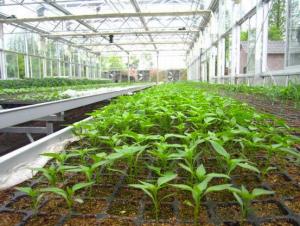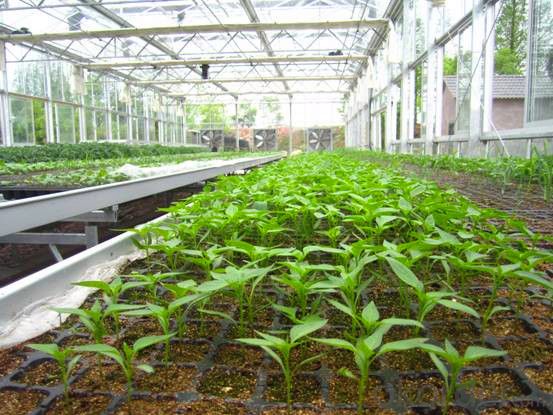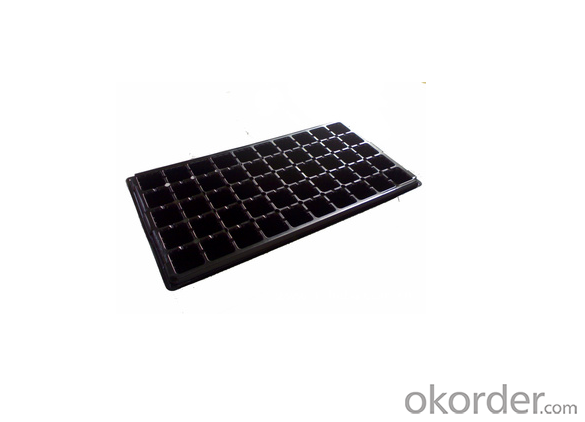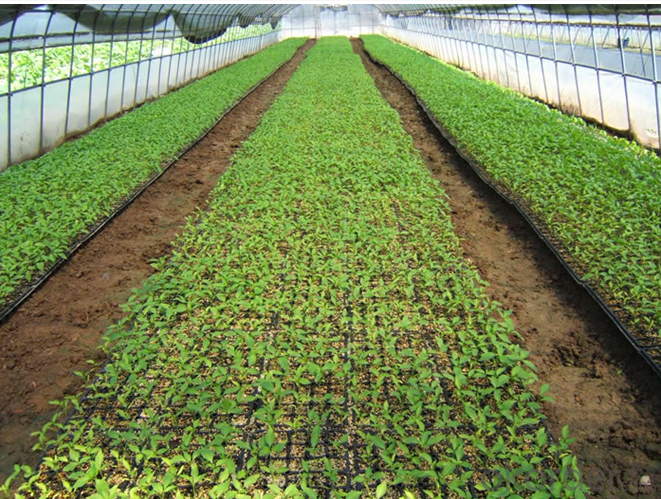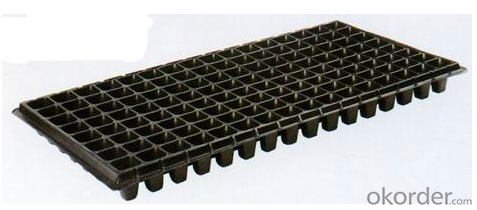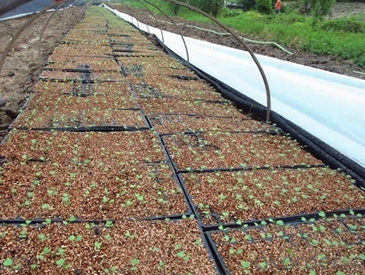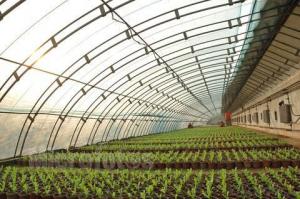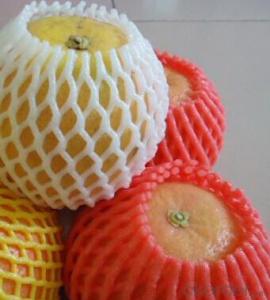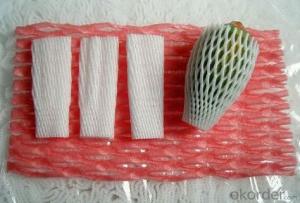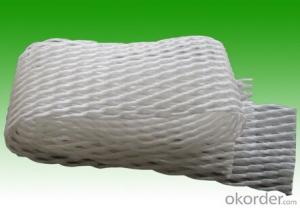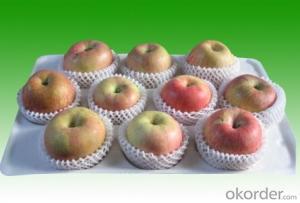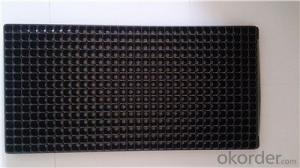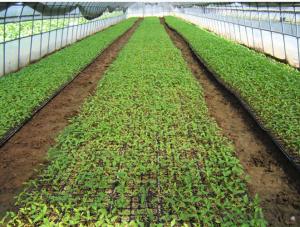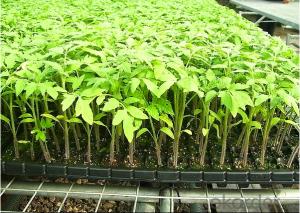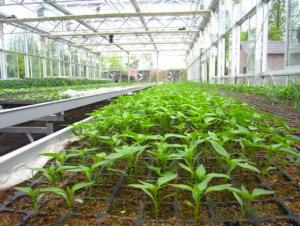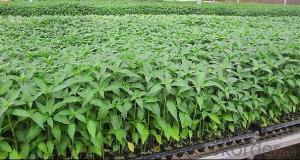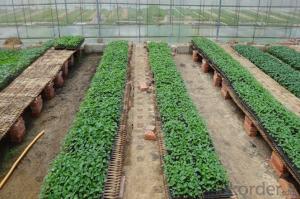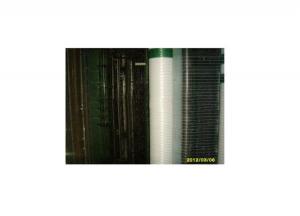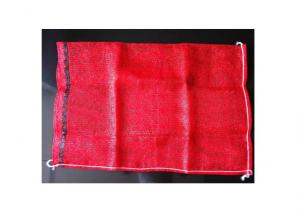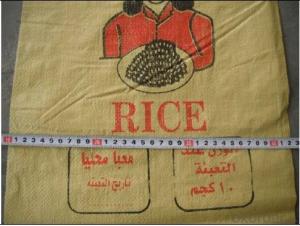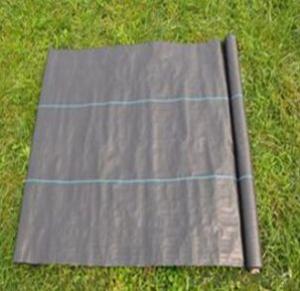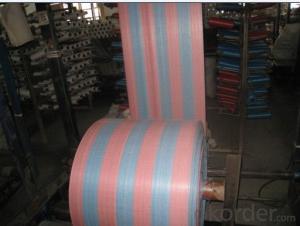Greenhouse Usage Flat Tray Plug Trays HIPS Made Plastic (Growing and Seedling)
- Loading Port:
- China main port
- Payment Terms:
- TT OR LC
- Min Order Qty:
- 3000 pc
- Supply Capability:
- 50000 pc/month
OKorder Service Pledge
OKorder Financial Service
You Might Also Like
Brief Introduction to CNBM:
CNBM International Corporation (CNBM International) is the most important trading platform of CNBM Group Corporation, a state-owned company under the direct supervision of State-owned Assets Supervision and Administration Commission of the State Council.
CNBM International is highly recognized by its business partners and clients all over the world and has obtained rapid development under the spirit of win-win. We will carry on the mutual beneficial, innovative and revolutionary trading structure as we did before, create value for our employees, share holders and clients and benefit the whole society in our future development.
Features of Plug Trays (Growing and Seedling) HIPS Made Plastic Plug Tray for Greenhouse:
· Material: HIPS
· Thickness: 0.5mm-1.5mm, Standard:1mm
· Weight: 80g(±5)g-230g(±5)g, Standard weight:155g(±5)g
· Size: length:490mm-540mm, width:190mm-345mm,depth:25mm-150mm
· Standard:540mmX280mm
· Cell count: 18-512
· Package: In Carton
· Warrenty: 8-10 times
Picture:
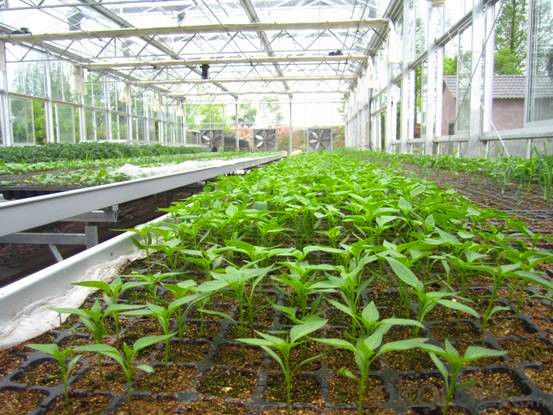
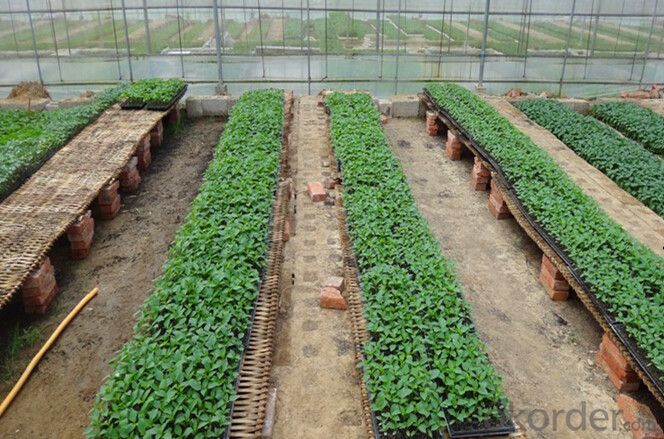
Specification of Plug Trays (Growing and Seedling) HIPS Made Plastic Plug Tray for Greenhouse:
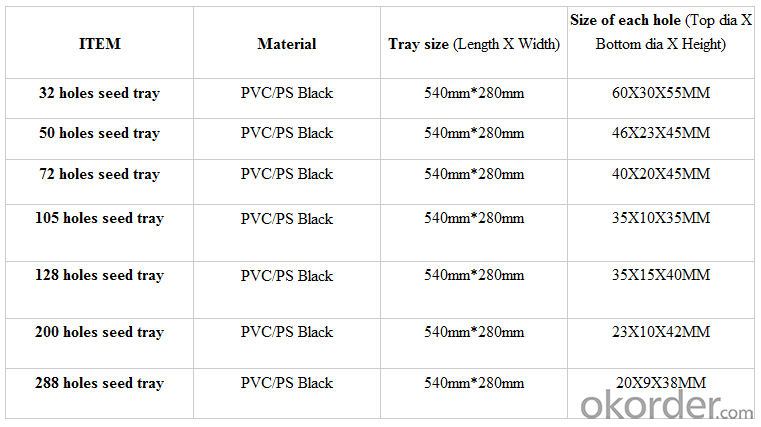
FAQ of Plug Trays (Growing and Seedling) HIPS Made Plastic Plug Tray for Greenhouse:
Q:1.How many times can the seed tray be used?
A: Under the same environment, it is decided by the thickness. Usually 0.6mm thickness can be used for 1 or 2 times.
1.0 thickness can be used for 3-4 times. 1.5 thickness can be used for 8-10 times.
Q: 2.How long is the production time?
A: Usually one to two weeks.
Q: 3.How is the seed tray being packaged?
A: They can be packaged in carton or pallets. Carton size is 1375px*725px*1250px.
- Q: Do nursery trays come with a self-watering feature?
- No, nursery trays typically do not come with a self-watering feature.
- Q: How long can plastic silage bags preserve animal feed?
- Plastic silage bags can preserve animal feed for several months, typically up to a year or even longer if stored properly.
- Q: Are agricultural plastic products versatile enough to be applied in other sectors outside of agriculture?
- <p>Yes, agricultural plastic products can be used in other industries. These products, such as plastic films, pipes, and containers, are known for their durability and resistance to weathering, making them suitable for construction, landscaping, and even in some cases, the automotive industry for parts production. Their versatility allows for repurposing in various sectors, provided the material specifications meet the industry standards.</p>
- Q: Can ground cover plants be used to improve soil structure?
- Yes, ground cover plants can indeed be used to improve soil structure. They help to prevent erosion, reduce compaction, and increase organic matter content in the soil. The deep and spreading root systems of ground cover plants bind the soil particles together, promoting better soil aggregation and preventing soil erosion. Additionally, as these plants grow, they contribute organic matter to the soil through decaying leaves and stems, which improves soil structure and fertility.
- Q: Can ground cover plants be used to attract pollinators?
- Yes, ground cover plants can be used to attract pollinators. These plants provide a low-growing, dense foliage that can offer nectar and pollen sources for various pollinator species, including bees, butterflies, and hummingbirds. Additionally, ground cover plants can provide shelter and nesting sites for pollinators, making them beneficial for both aesthetic purposes and supporting biodiversity in gardens and landscapes.
- Q: How do you choose ground cover that tolerates clay soil?
- When choosing ground cover that tolerates clay soil, it is important to look for plants that are known to thrive in such conditions. Opt for varieties that have deep roots, as they can penetrate the heavy clay and access nutrients and water. Additionally, consider selecting ground covers that are native to your region, as they are often adapted to the specific soil conditions. It is also helpful to improve the soil quality by adding organic matter, such as compost, to enhance drainage and fertility.
- Q: How do you prevent fertilizer runoff in nursery trays?
- One way to prevent fertilizer runoff in nursery trays is by using slow-release fertilizers or organic fertilizers that release nutrients gradually, reducing the risk of excess nutrients leaching away. Additionally, monitoring and adjusting the application rates of fertilizers to match the specific needs of the plants can help minimize runoff. Implementing proper irrigation practices such as using drip irrigation or watering trays from below can also reduce the amount of water and fertilizer that runs off. Lastly, regularly inspecting the trays for any signs of runoff and promptly addressing any issues can further prevent fertilizer runoff in nursery trays.
- Q: Describe how seedling nets or covers are utilized by farmers to safeguard young plants from pests and diseases.
- <p>Farmers use seedling nets or covers to create a physical barrier around young plants, protecting them from pests and diseases. These covers can be made of various materials, including lightweight fabrics or fine mesh, which allow light and air to reach the seedlings while keeping out larger pests. They prevent direct contact between seedlings and harmful insects, reducing the risk of damage and disease transmission. Additionally, these covers can help maintain a more consistent microclimate around the plants, which can reduce the growth of fungal diseases that thrive in damp conditions. By using seedling nets or covers, farmers can reduce the need for chemical pesticides, promoting more sustainable and environmentally friendly agricultural practices.</p>
- Q: Which is better for the environment paper or plastic?
- Both have good and bad points in the process of making them which more or less makes them equal. Both can be recycled but I think in that respect plastic comes out ahead....so that's what I use the most.
- Q: This question asks about the methods farmers employ to minimize water loss in their fields during rainy conditions using agricultural plastic.
- <p>Farmers use agricultural plastic, such as mulch films, to reduce water loss during rainy weather by covering the soil surface. These films help in several ways: they decrease direct contact between the soil and rainwater, which reduces soil erosion and compaction; they lower the rate of evaporation by acting as a barrier, thus conserving moisture; and they can also help in warming the soil, which can be beneficial in cooler climates. Additionally, plastic mulches can suppress weed growth, which competes with crops for water, further preserving water for the crops. By managing water more effectively, farmers can enhance crop yields and reduce the need for supplementary irrigation, especially in areas prone to water scarcity.</p>
Send your message to us
Greenhouse Usage Flat Tray Plug Trays HIPS Made Plastic (Growing and Seedling)
- Loading Port:
- China main port
- Payment Terms:
- TT OR LC
- Min Order Qty:
- 3000 pc
- Supply Capability:
- 50000 pc/month
OKorder Service Pledge
OKorder Financial Service
Similar products
Hot products
Hot Searches
Related keywords
